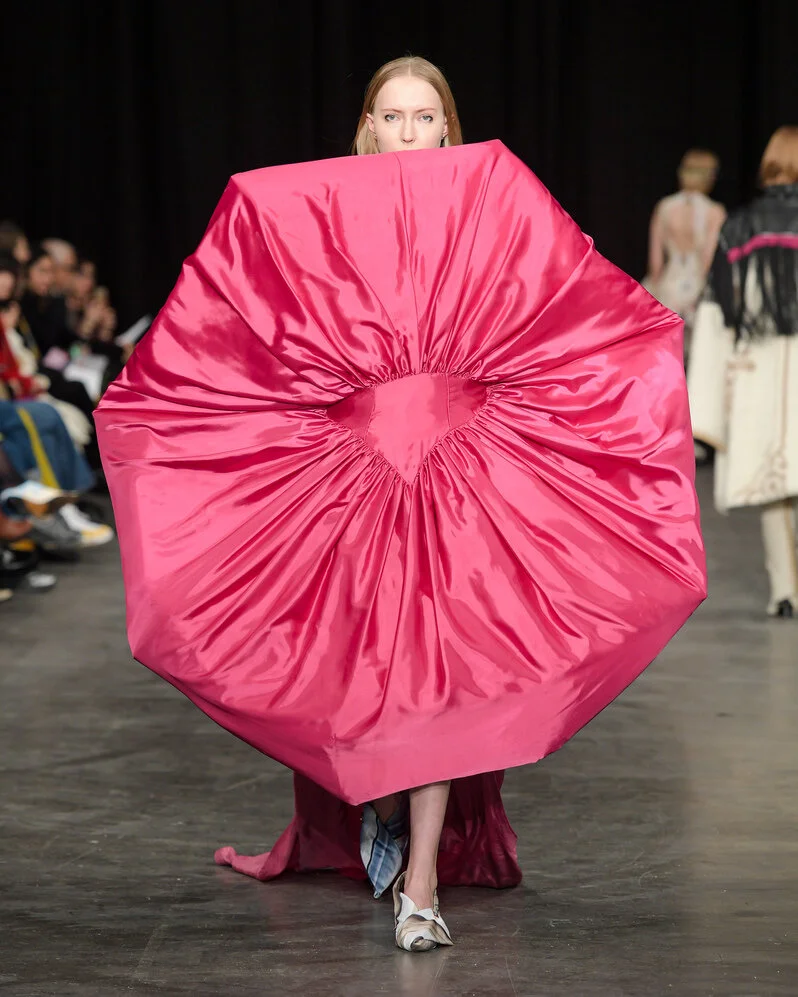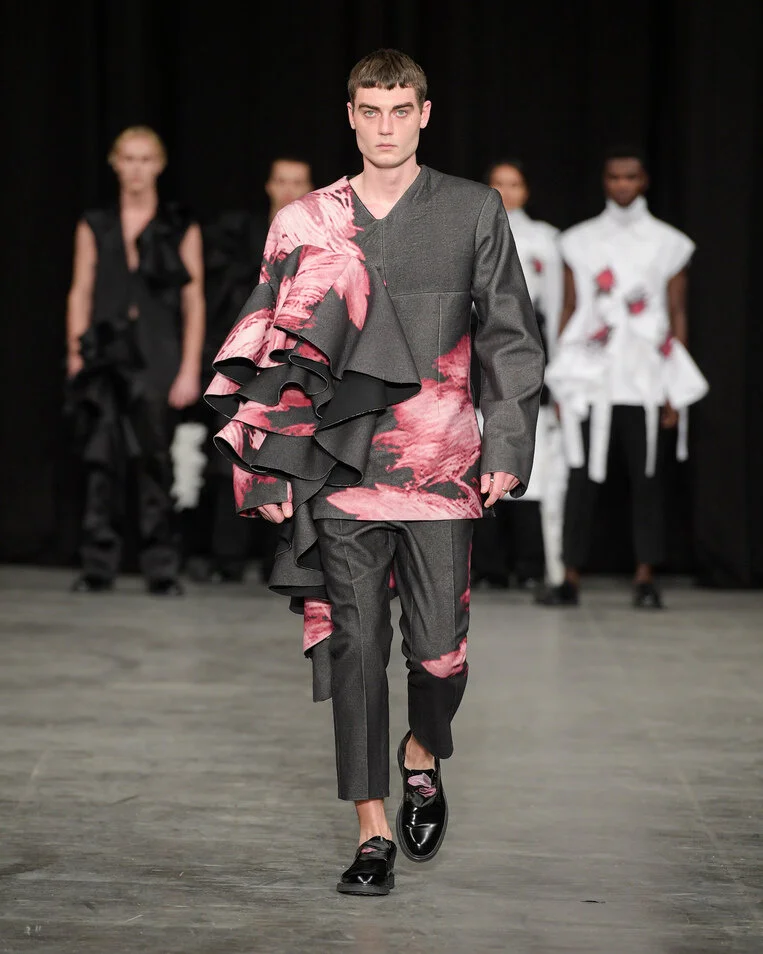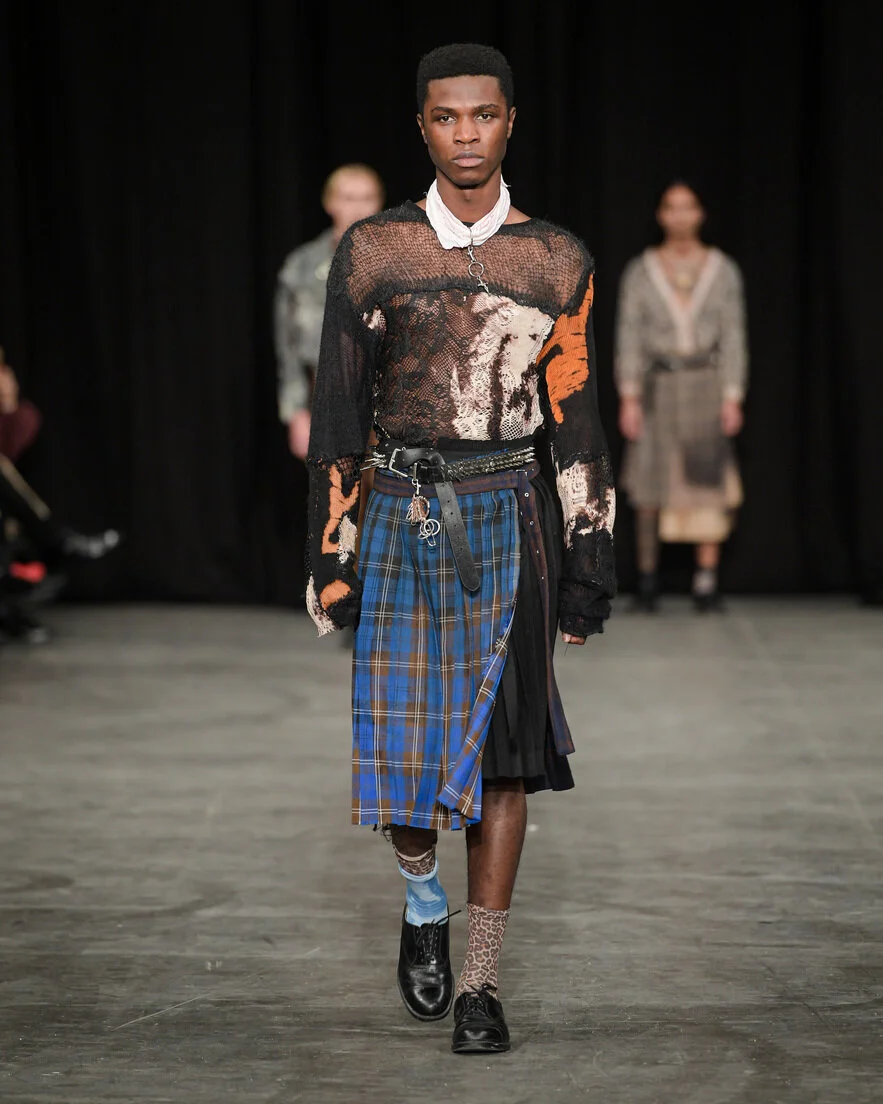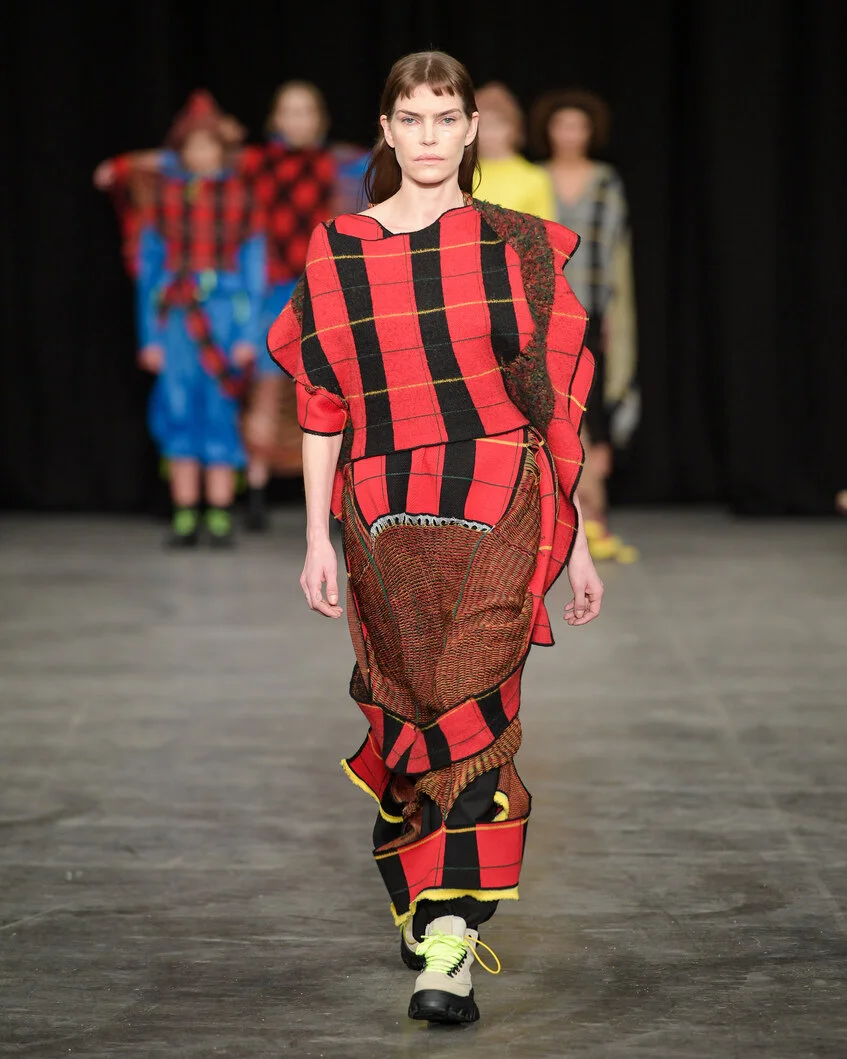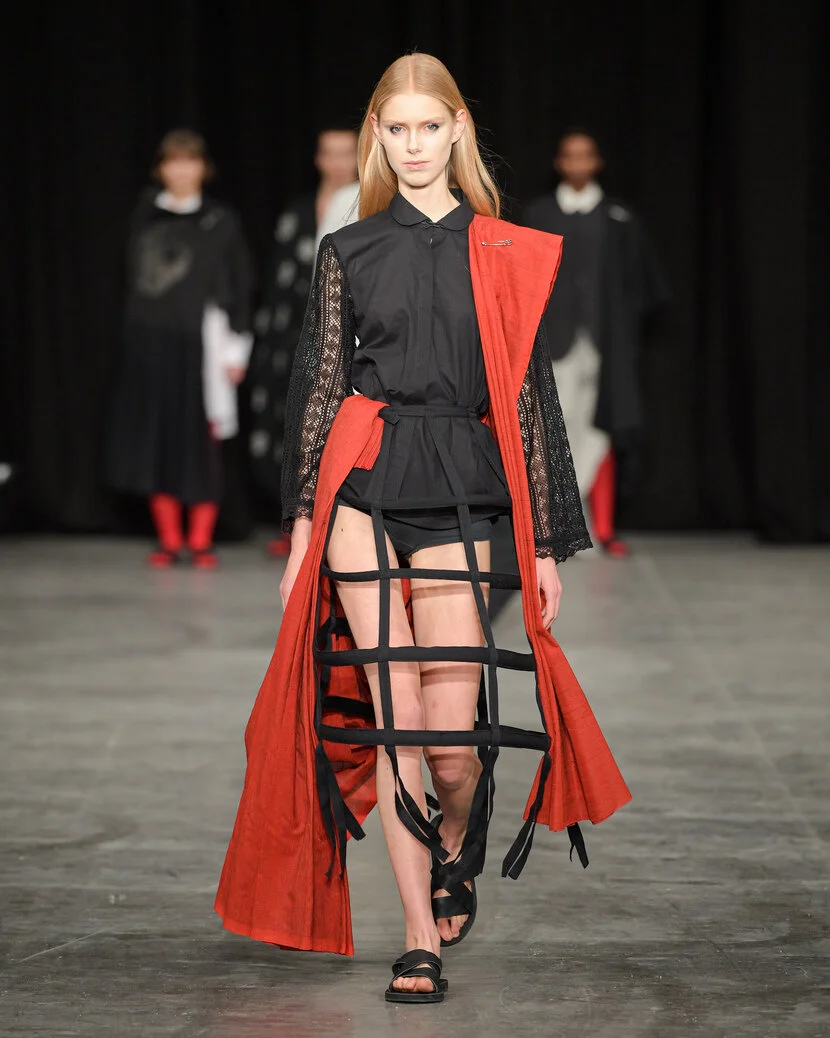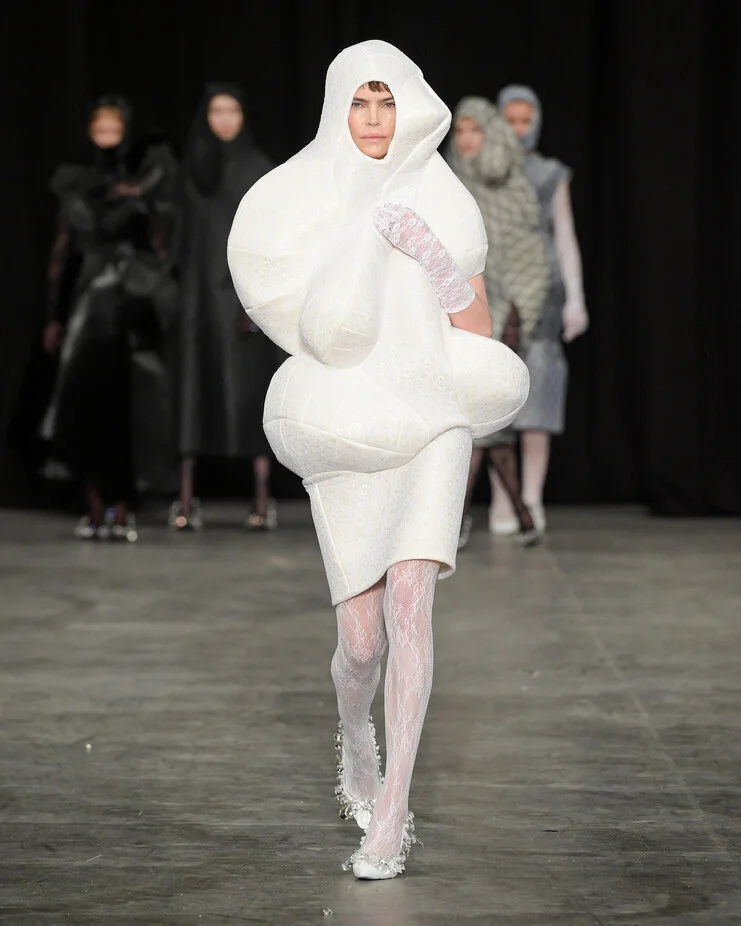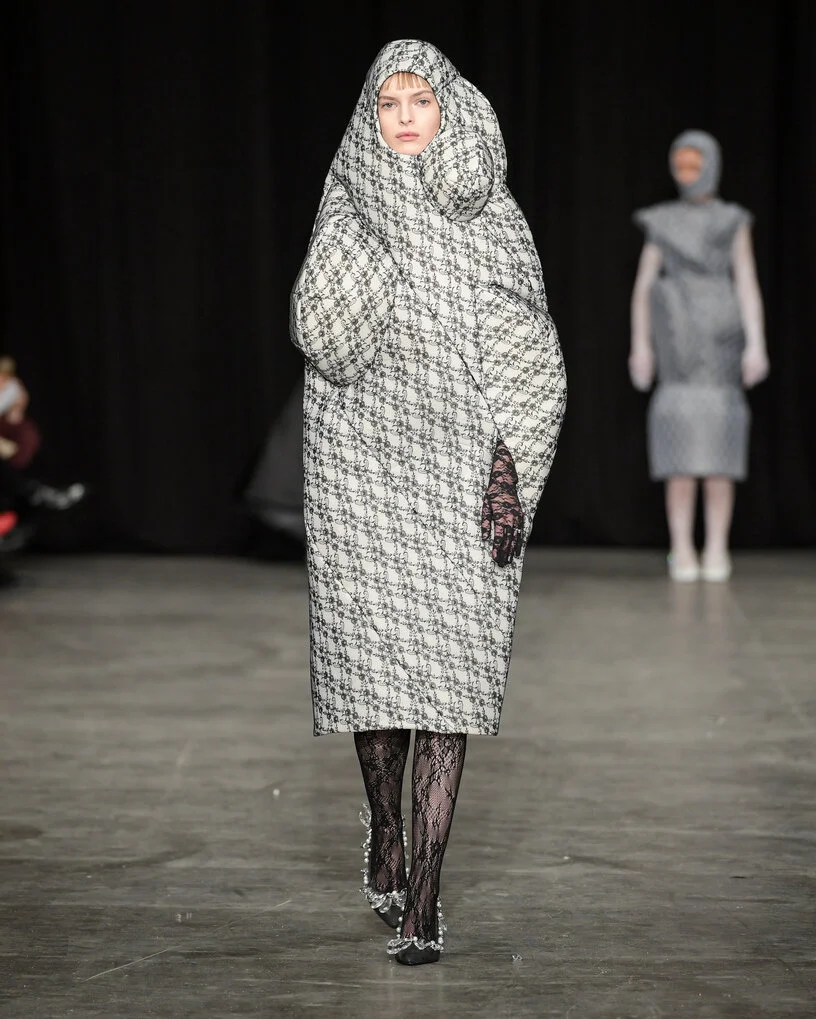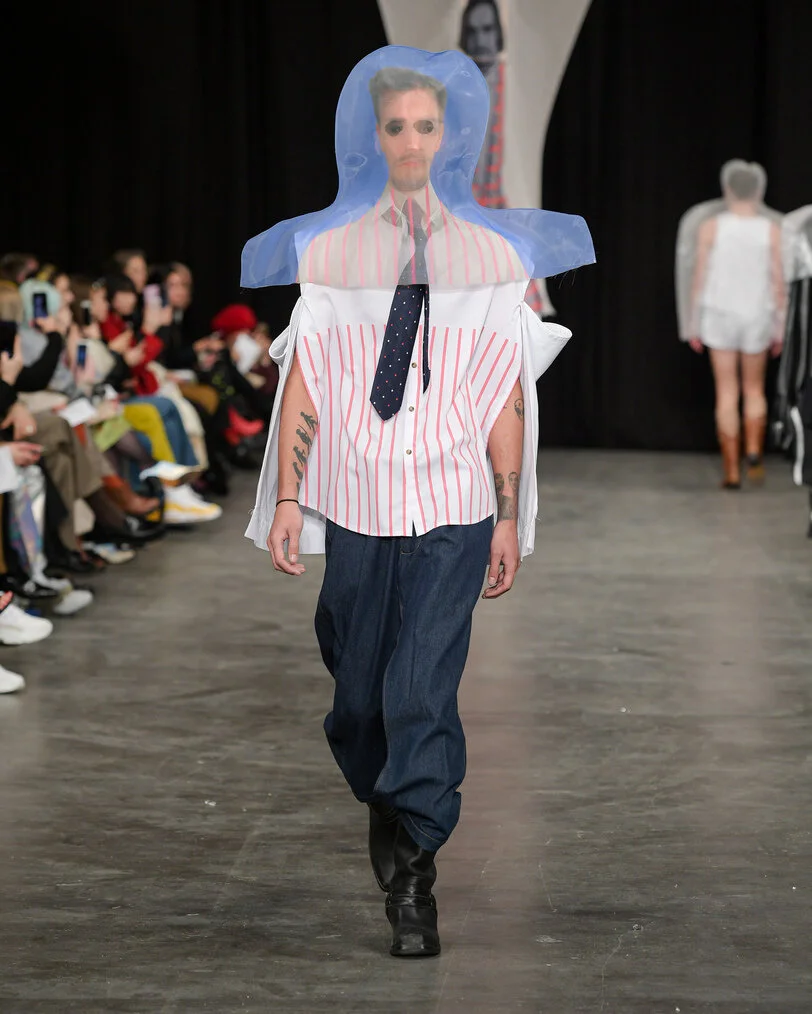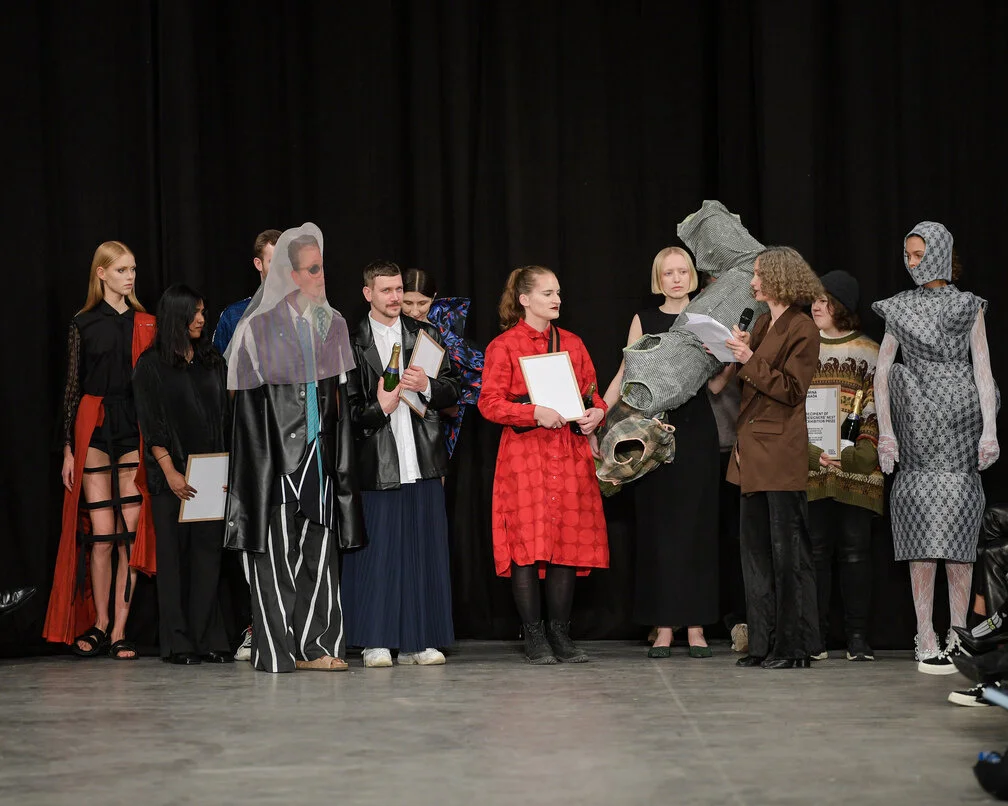by Lotus Ladegaard
Designers’ Nest has been around since 2005. founded by Jan Busch Clausen. Today, the prestigious award is run by Ane Lynge-Jorlen and is supported by The Danish Arts Foundation, The Nordic Culture Fund, Tuborgfondet, Beckett-Fonden and the City of Copenhagen. Designer’s Nest showcases the best fashion graduates from the Nordic design schools. Each year 10 finalists are selected to show a capsule collection, and the winner is announced at Copenhagen Fashion Week. This year, an Exhibition prize was also awarded to five students who will be showcased in the outside vitrines in front of the Design Museum in Copenhagen.
Every year, the Designer’s Nest show offers a lot of originality, creativity, and craftsmanship. This year, however, the entire show was a little more subdued. Although it did not lack in craftsmanship it lacked a little in the wow factor (which is not entirely a bad thing).
This year’s winner of the Designers’ Nest Award was Milka Seppänen from Aalto University in Finland, who showcases a capsule collection of menswear with intricate details, fabric manipulation, leftover, and recycled materials and exquisite tailoring, knitting, and crochet. Drawing on inspiration from prior decades, Milka Seppänen showed a collection that paid homage to Finnish subcultures of the ’70s, ’80s, and ’90s. The Exhibition winners went to Amina Saada from Aalto University with her wearable sculptures. Courtney Makins with sugar-based eco-friendly wearable art and Frederik Möller’s collection, both from the Swedish School of Textiles. Ishara Jayathilake from Oslo National Academy of the Arts and her new take on Sri Lankan dresses. And last, but not least Oliver Opperman from the Royal Danish Academy of Fine Arts and his use of dead stock fabrics made a significant play for the attention of the crowd.
45.2K |





